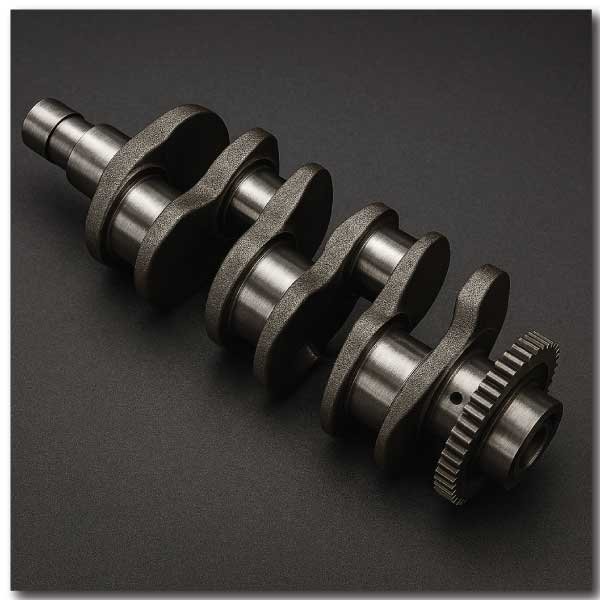The crankshaft is one of the most critical components of an internal combustion engine, serving as the heart that converts the pistons’ linear motion into rotational energy. Understanding the crankshaft definition and its various types is essential for anyone interested in engine mechanics, whether for automobiles, motorcycles, or industrial machinery.
Crankshafts are made from durable materials like forged steel or cast iron to withstand high stress and torque. Beyond simply converting motion, the crankshaft has multiple uses, including transmitting power to engine components, supporting bearings, and balancing the engine for smooth operation.
The working principle of a crankshaft revolves around linking pistons to a rotating shaft via connecting rods, creating torque that drives vehicles and machines. In this guide, we will explore the definition, types, uses, materials, and working principle of crankshafts, helping you gain a complete understanding of this vital engine part.
FAQs:
What is a crankshaft in an engine?
A crankshaft is a mechanical component in internal combustion engines that converts the up-and-down motion of pistons into rotational motion. This rotation generates torque, which powers the vehicle’s wheels or machinery. It connects to pistons via connecting rods and is designed to withstand high stress, ensuring smooth and efficient engine operation.
What are the main types of crankshafts?
Crankshafts are commonly classified as flat (two-plane), cross-plane, inline, one-piece, built-up, and hollow. Flat crankshafts are used in V-type engines for smooth operation, while cross-plane crankshafts provide better balance at high speeds. Inline crankshafts are typical in straight engines. One-piece and built-up crankshafts differ in construction, and hollow crankshafts are lighter for performance applications.
What materials are used to make crankshafts?
Crankshafts are usually made from forged steel, cast iron, or billet steel. Forged steel is strong and durable, suitable for high-stress applications. Cast iron is cost-effective for standard engines, offering reasonable strength. High-performance or racing engines often use billet steel for superior durability, precision, and resistance to wear and high torque conditions.
How does a crankshaft work?
A crankshaft works by converting the pistons’ reciprocating motion into rotational motion. Pistons move up and down due to fuel combustion, pushing the connecting rods attached to the crankshaft. The crankpins and main journals rotate the shaft, generating torque. This rotational energy is then transmitted to the flywheel, camshaft, and other components to power the engine efficiently.
What are the main uses of a crankshaft?
The crankshaft’s primary uses include converting piston motion into rotational motion, transmitting power to engine components, balancing the engine, and supporting bearings. It drives the flywheel, camshaft, and auxiliary parts like the oil pump and alternator. Crankshafts are essential in vehicles, motorcycles, industrial machines, and generators, ensuring smooth, efficient, and reliable engine operation.
How do you maintain a crankshaft?
Maintaining a crankshaft involves regular lubrication, inspection for wear or cracks, and proper alignment of bearings and connecting rods. Using high-quality engine oil and timely oil changes reduces friction and prevents overheating. Any signs of vibration or unusual noise should be checked immediately. Proper maintenance ensures long-lasting performance, reduces the risk of engine damage, and maintains smooth operation.

